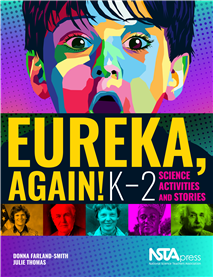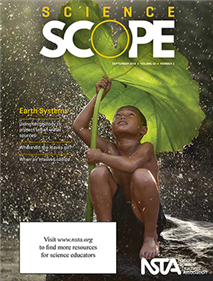All Earth & Space Science resources
Blog Post
Science Class: A Place Where Children Should Be Seen and Heard
I recently observed a lesson about how shadows change throughout the day, and I was fascinated by the amount of time the teacher and the class took to listen to and watch one another as they discussed the data. The careful structuring of time for ana...
By Cindy Workosky
NSTA Kids
Come along on a tour of the wonderful world of birds and their beaks. This book is the story of a child and two grown-up friends on a jaunt across their yard, in a park, past a pond, and through the pages of a photo album. Like them, you’ll find yo...
NSTA Press Book
Patterns and the Plant World, Grade 1: STEM Road Map for Elementary School
What if you could challenge your first graders to relate changes in seasonal weather patterns to changes in the plant world using a container garden? With this volume in the STEM Road Map Curriculum Series, you can!...
Book Chapter
Scientists and Engineers Are CURIOUS
In this lesson, students learn that scientists and engineers are curious. They read about Mary Anning in the book The Fossil Girl: Mary Anning’s Dinosaur Discovery, by Catherine Brighton. After reading, students will learn about the history of Eart...
Journal Article
Citizen Science: Cloudy With a Chance of “Cirrus” Science
This column highlights formal and informal science research projects that students can join and contribute to by gathering and sharing data. NASA Globe Observer (GO) Clouds is a citizen science project that combines cloud and sky observations from t...
NSTA Press Book
Instructional Sequence Matters, Grades 6–8: Structuring Lessons With the NGSS in Mind
Instructional Sequence Matters shows how to make simple shifts in the way you arrange and combine activities to improve student learning. It also makes it easy for you to put the NGSS into practice. After explaining why sequencing is so important, au...
By Patrick Brown
Blog Post
First-Graders Modeling Day and Night: Making Sense of a Phenomenon
As a first-grade teacher in Detroit with predominantly Latinx students and English language learners, I worked for several weeks at the end of last school year with a doctoral candidate in science education and former elementary teacher, Christa Have...
By Cindy Workosky





